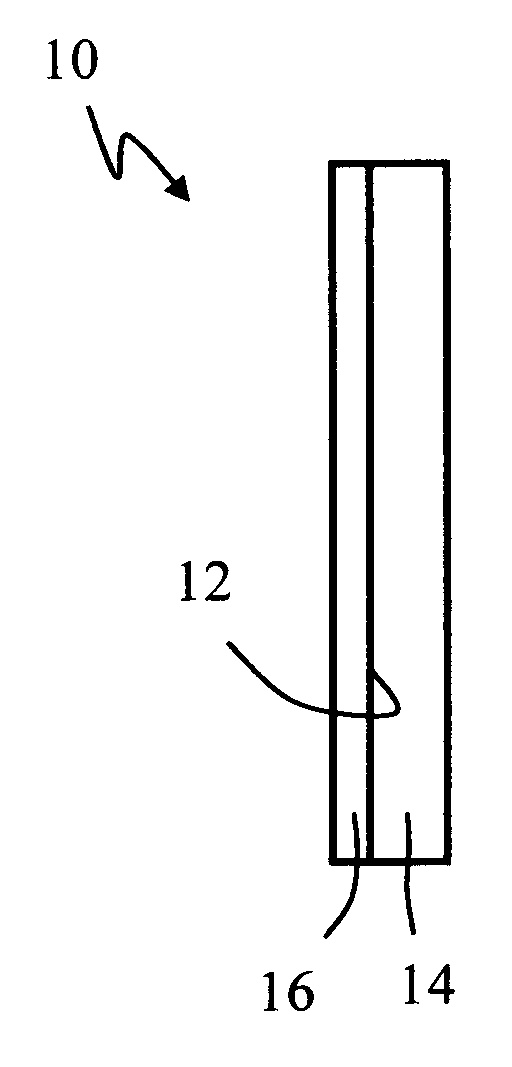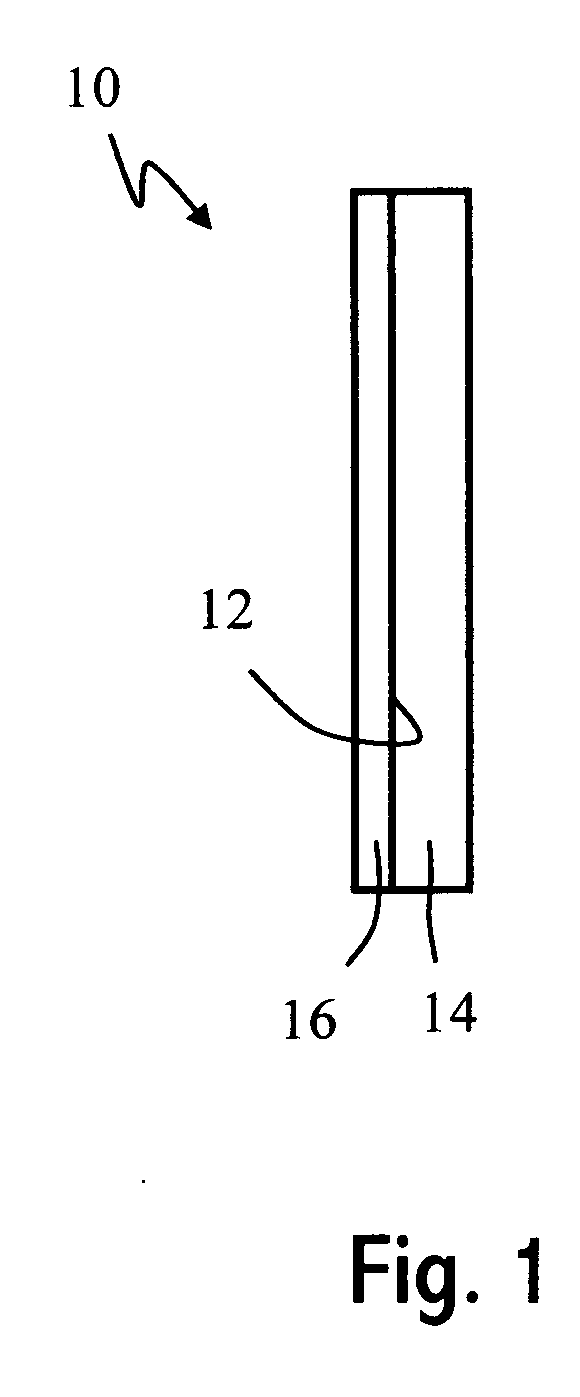Low distortion interlayer
- Summary
- Abstract
- Description
- Claims
- Application Information
AI Technical Summary
Benefits of technology
Problems solved by technology
Method used
Image
Examples
example 1
[0076] A first multiple layer glass panel is formed with the following layers: glass / / poly(vinyl butyral) / / poly(ethylene terephthalate) / / poly(vinyl butyral) / / glass, where the poly(ethylene terephthalate) is 0.05 millimeter Dupont Mylar®, and the poly(vinyl butyral) layers are each 0.38 millimeters in thickness produced through conventional techniques.
[0077] A second multiple layer glass panel is formed with the following layers: glass / / poly(vinyl butyral) / / poly(ethylene terephthalate) / / poly(vinyl butyral) / / glass, where the poly(ethylene terephthalate) is 0.05 millimeter Dupont Mylar®, and the poly(vinyl butyral) layers are each 0.38 millimeters in thickness produced through the methods of the present invention.
[0078] Subjective analysis of the two multiple layer glass panels indicates that the first panel has visible applesauce while the second panel does not.
example 2
[0079] A 0.76 millimeter thick poly(vinyl butyral) sheet (first sheet) is coextruded with blue pigmented color. The sheet has a WI of 13,000 and an Rz of 15 microns. The sheet is embossed to a 40 micron Rz and a 16,000 WI. The sheet is then laminated between two panes of glass.
[0080] A second poly(vinyl butyral) sheet is produced by conventional methods, and has a thickness of 0.76 millimeters, and an Rz of 35. This second sheet is also laminated between two panes of glass.
[0081] Results indicate that mottle is visible in the second sheet but not in the first. Imaging software shows that a mottle value of 3.9 is obtained with the first sheet, while a mottle value of 14.5 is obtained with the second sheet.
[0082] By virtue of the present invention, it is now possible to provide poly(vinyl butyral) sheet, and other polymer sheet, with superior optical qualities when used in conjunction with various other polymer sheets. The problems of applesauce and mottle can be reduced or elimina...
PUM
| Property | Measurement | Unit |
|---|---|---|
| Temperature | aaaaa | aaaaa |
| Temperature | aaaaa | aaaaa |
| Length | aaaaa | aaaaa |
Abstract
Description
Claims
Application Information
 Login to View More
Login to View More - R&D
- Intellectual Property
- Life Sciences
- Materials
- Tech Scout
- Unparalleled Data Quality
- Higher Quality Content
- 60% Fewer Hallucinations
Browse by: Latest US Patents, China's latest patents, Technical Efficacy Thesaurus, Application Domain, Technology Topic, Popular Technical Reports.
© 2025 PatSnap. All rights reserved.Legal|Privacy policy|Modern Slavery Act Transparency Statement|Sitemap|About US| Contact US: help@patsnap.com



